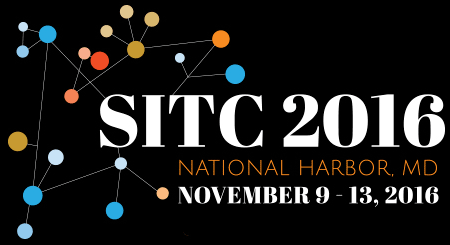Beyond Single-Agents: The Future of Combination Immunotherapy
Clinical Safety and Efficacy Assessment of the CD137 Agonist Urelumab Alone and in Combination with Nivolumab in Patients with Hematologic and Solid Tumor Malignancies
In a session looking ahead to novel treatment combinations, Erminia Massarelli, MD, PhD, MS, (University of Texas MD Anderson Cancer Center) presented safety and efficacy data from two studies of urelumab, an anti-CD137 monoclonal antibody that enhanced T and NK cell anti-tumor activity in preclinical models. In the urelumab monotherapy study, which included 123 previously treated patients with advanced malignancy (0.1 or 0.3 mg/kg, Q3W) or advanced non-Hodgkin lymphoma (8mg Q3W or Q6W), patients experienced few serious treatment-related adverse events (TRAE; n=9 [7%]) and 6 patients with lymphoma had partial (n=3) or complete (n=3) remission. In view of the robust antitumor activity and greater IFNγ activity observed in preclinical studies when urelumab was combined with nivolumab, rather than given alone, a combination study was undertaken. The combination trial included 138 (majority were previously treated) patients with advanced solid tumors or B cell lymphoma; or diffuse large B cell lymphoma (DLBC; n=22), melanoma (n=40), non-small cell lung cancer (NSCLC; n=20) or squamous cell carcinoma of the head and neck (SCCHN; n=22. Patients received urelumab (8mg Q4W) plus nivolumab (3 mg/kg Q2W or 240 mg Q2W. Fatigue was the most frequent TRAE (n=43; 31%), and discontinuations due to AE occurred in only eight patients (6%). Approximately 10% of patients had an increase in hepatic transaminases. Of 124 evaluable patients, two experienced complete response (1 melanoma, 1 SCCHN), 18 had partial response (17 melanoma; 1 SCCHN); no other patients had responded at interim analysis. Among checkpoint blockade-naïve melanoma patients, the objective response rate (ORR) was 50% and disease control rate (DCR) was 70%, irrespective of PD-L1 status. Urelumab stimulated peripheral IFNγ-induced cytokine production to a greater extent when combined with nivolumab; similarly, combination therapy led to greater expression of IFNγ and cytokine CXCL9, and showed a trend towards greater increase in T and NK cell numbers, than urelumab alone in most melanoma tumor samples evaluated. Urelumab was generally well-tolerated, with or without nivolumab, at the flat and weight-based doses investigated, and had particular benefit in patients with melanoma.





Important Dates
Regular Abstracts Published in JITC
November 8, 2016
Late-Breaking Abstracts Published in JITC
December 8, 2016
Thank You, Supporters!
Thank you, SITC 2016 supporters. Because of your generosity, SITC 2016 was a great success!
Interested in supporting other SITC programs? Confirm your support today!


Connect with SITC!